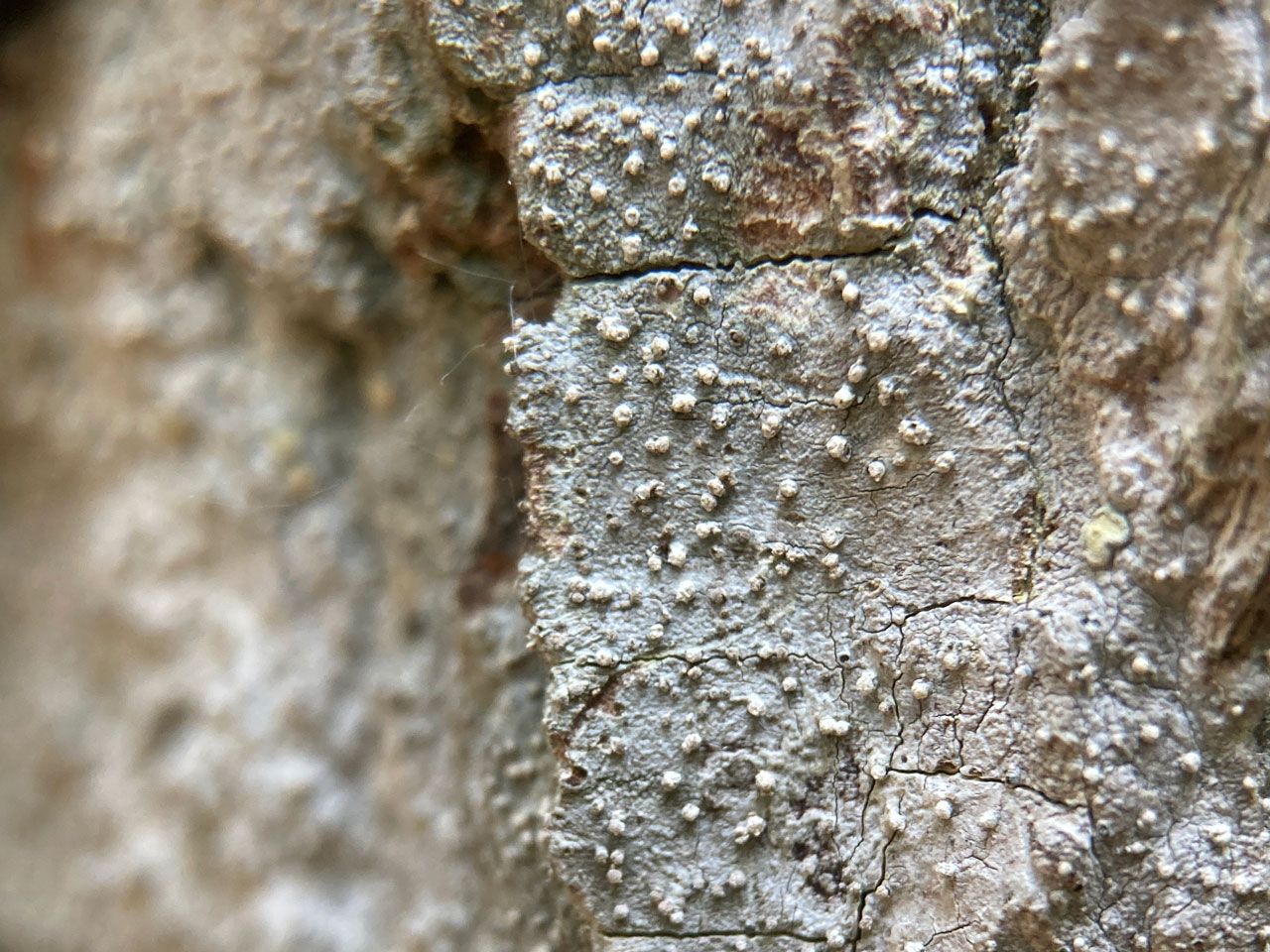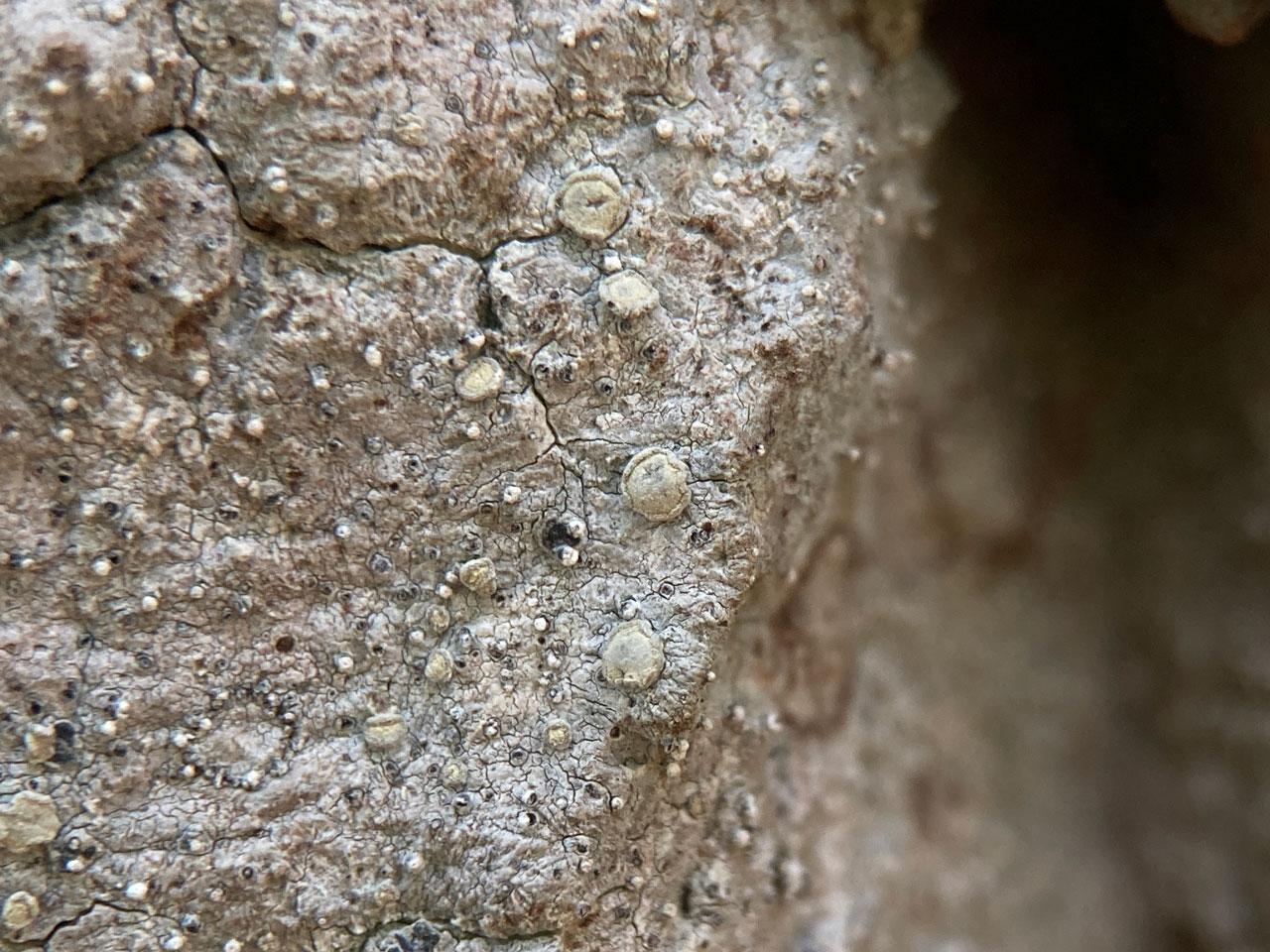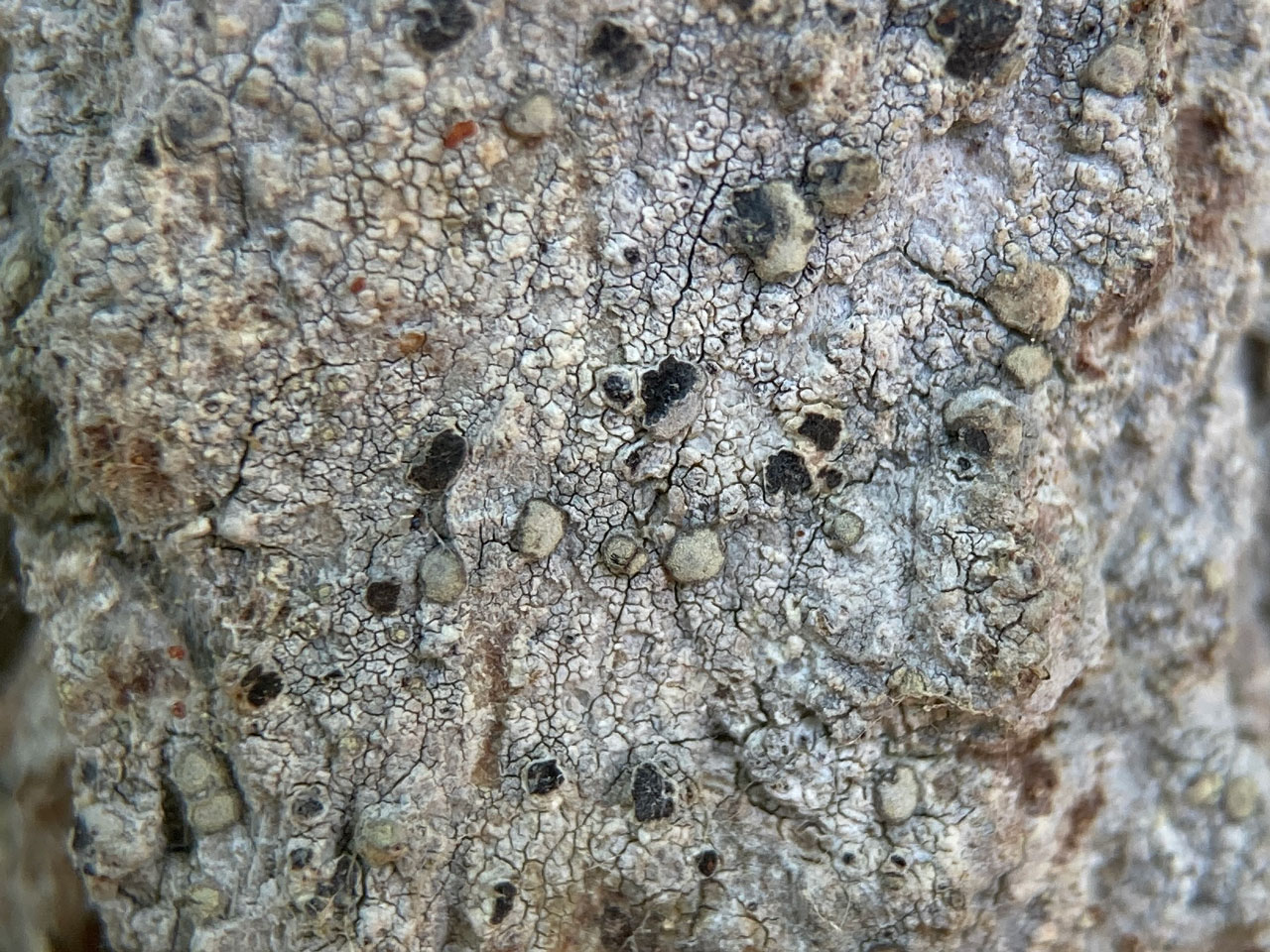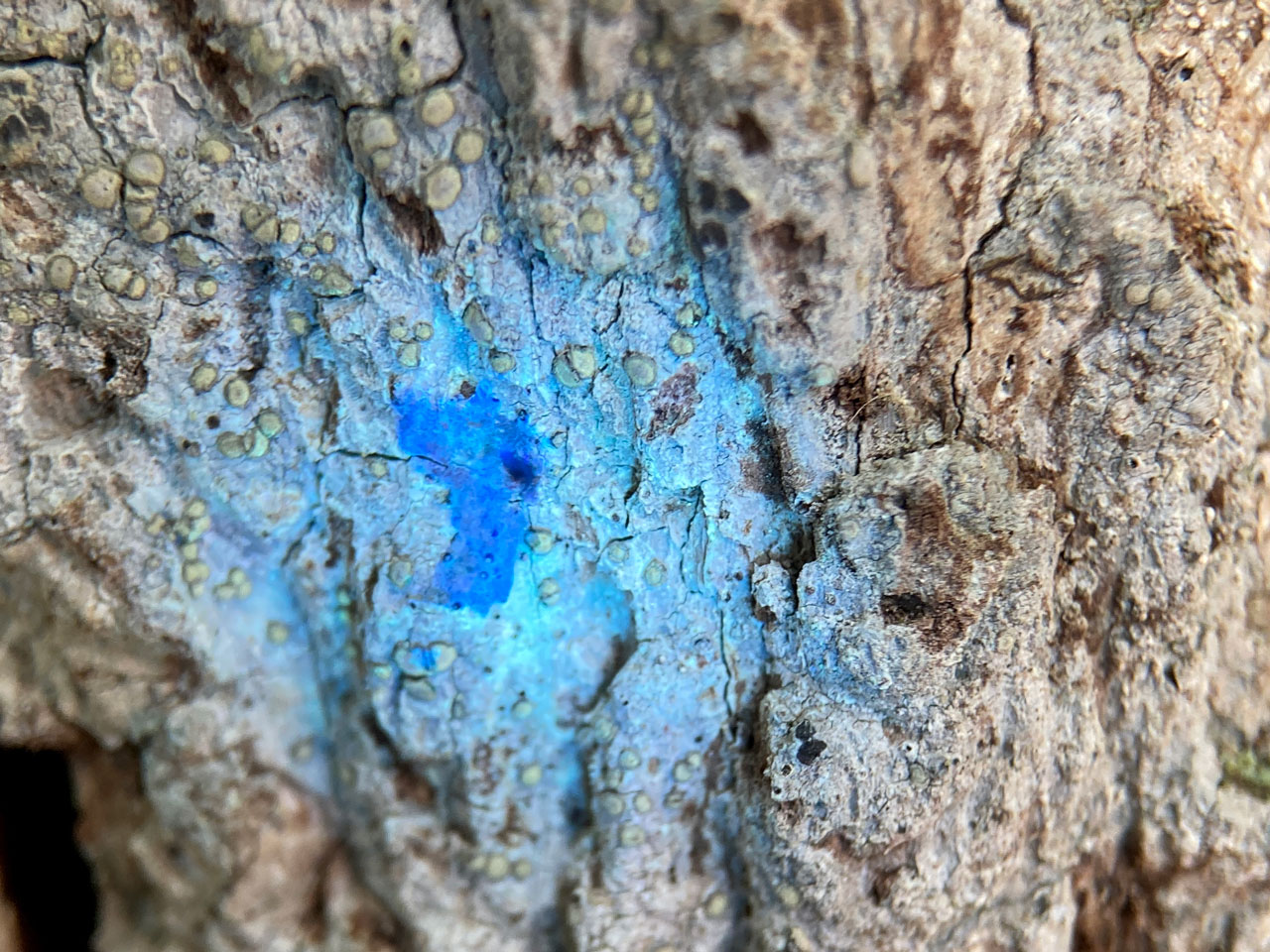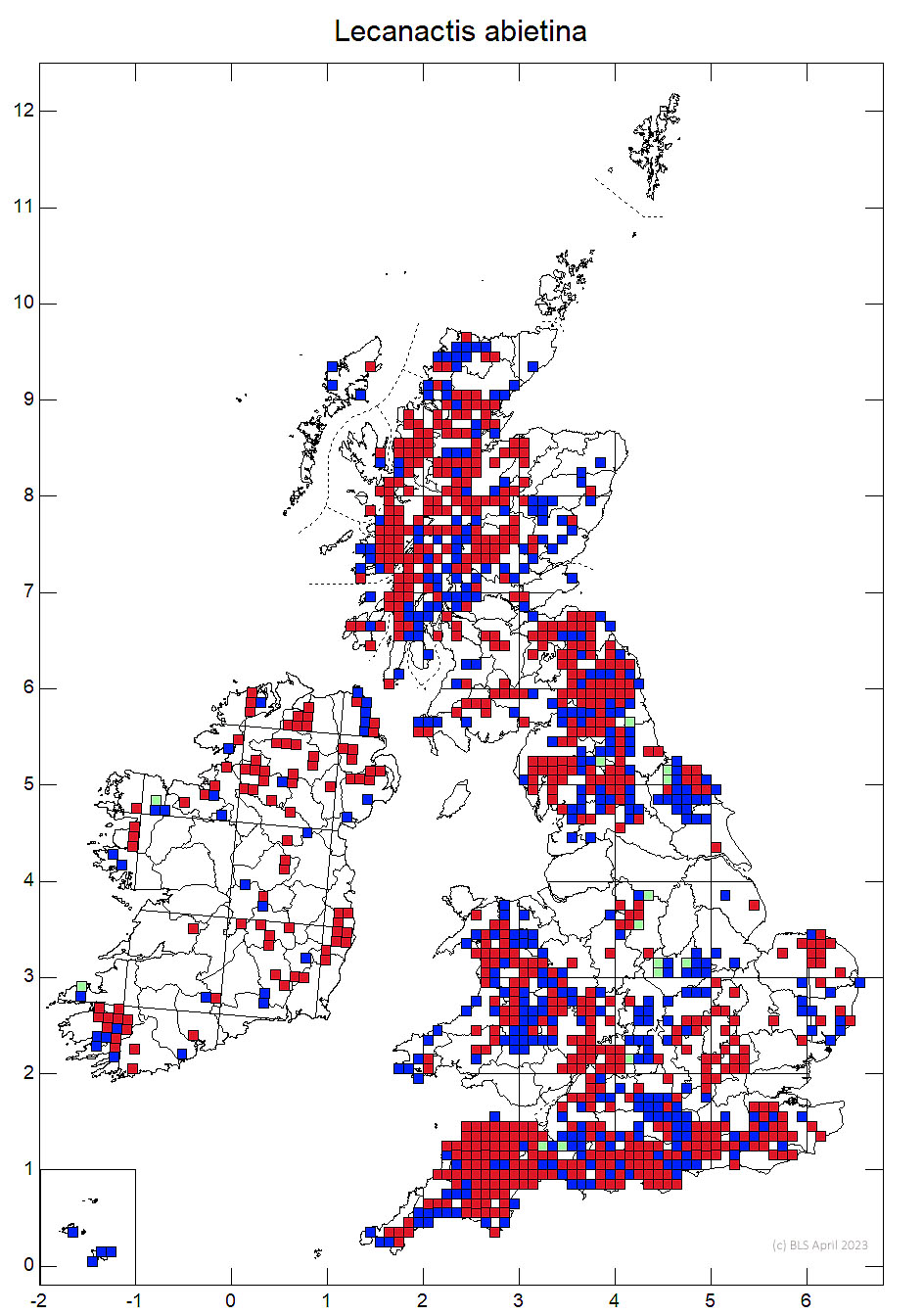Lecanactis abietina
Lecanactis abietina is typically seen as whitish grey sheets on the dry sides of mature trees in woodland. Common and often dominating in species poor communities. Frequently sterile but with abundant knob-like and white-pruinose pycnidia; when sterile the C+ red reaction of the pycnidia pruina readily separates this lichen from the similar Inoderma subabietinum and Opegrapha vermicellifera. When present, the apothecia are distinctive, covered in thick yellow-grey pruina (liked to foaming beer mugs, by Francis Rose).
Thallus thin, effuse, mauve-grey to whitish grey. Apothecia (not always present) 0.7–2 mm diam., circular, sessile or appressed, thickly yellow-grey pruinose over the brown-black disc, which has a prominent, persistent true exciple. Ascospores fusiform to acicular, 3(-4)-septate, ± curved, 28–40 × 3–6 μm. Pycnidia 0.2–0.3 mm diam., numerous and evenly scattered, cylindrical, knob-like, with white-pruinose apices; walls 25–50 μm thick, dark brown in water mount, green-black in K; conidiogenous cells 8–12 × 1.9–2.4 μm; conidia cylindrical, 12–17 × 2–3 μm. Pycnidial pruina C+ red, K–; apothecial pruina and thallus C–, K–, KC–, Pd–; medulla UV+ yellow- or glaucous grey, K/UV (wet)+ bright blue (lecanoric and schizopeltic acids, unknown UV-1 positive substances).
When sterile, distinguished from Inoderma subabietinum , I. byssaceum and Opegrapha vermicellifera by the C+ red pycnidial pruina and large conidia. Thalli occasionally parasitized by Milospium graphideorum or Tylophoron hibernicum. Other lichenicolous fungi include Chaenothecopsis vainioana, an unidentified Chaenothecopsis with non-septate ascospores resembling Chaenothecopsis australis and Taeniolella arthoniae (M.S. Christ. & D. Hawksw.) Heuchert & U. Braun.
On dry, often shaded acid bark and exposed wood in woodland on medium-aged to old trees, deciduous and, sometimes, coniferous trees; best developed in vertical crevices on N. or N.E. sides of trunks; occasionally under overhangs of acid rocks, bryophytes or plant debris; locally common. Dominant on dry bark on mature trees in the species poor Mature Dry Bark Community (Lecanactidetum abietinae).

Throughout Britain, except in extremely oceanic situations, local in Ireland, rare in the central plain.
Cannon, P., Aptroot, A., Coppins, B., Ertz, D., Sanderson, N., Simkin, J. & Wolseley, P. (2021). Arthoniales: Roccellaceae, including the genera Cresponea, Dendrographa, Dirina, Enterographa, Gyrographa, Lecanactis, Pseudoschismatomma, Psoronactis, Roccella, Schismatomma and Syncesia. Revisions of British and Irish Lichens 16: 1-22.
Text by Neil A Sanderson based on Cannon et al (2021)
